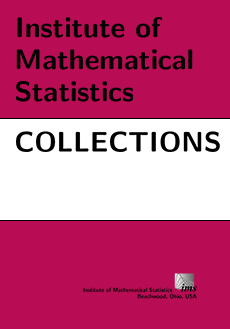Abstract
We propose a general and formal statistical framework for multiple tests of association between known fixed features of a genome and unknown parameters of the distribution of variable features of this genome in a population of interest. The known gene-annotation profiles, corresponding to the fixed features of the genome, may concern Gene Ontology (GO) annotation, pathway membership, regulation by particular transcription factors, nucleotide sequences, or protein sequences. The unknown gene-parameter profiles, corresponding to the variable features of the genome, may be, for example, regression coefficients relating possibly censored biological and clinical outcomes to genome-wide transcript levels, DNA copy numbers, and other covariates. A generic question of great interest in current genomic research regards the detection of associations between biological annotation metadata and genome-wide expression measures. This biological question may be translated as the test of multiple hypotheses concerning association measures between gene-annotation profiles and gene-parameter profiles. A general and rigorous formulation of the statistical inference question allows us to apply the multiple hypothesis testing methodology developed in [Multiple Testing Procedures with Applications to Genomics (2008) Springer, New York] and related articles, to control a broad class of Type I error rates, defined as generalized tail probabilities and expected values for arbitrary functions of the numbers of Type I errors and rejected hypotheses. The resampling-based single-step and stepwise multiple testing procedures of [Multiple Testing Procedures with Applications to Genomics (2008) Springer, New York] take into account the joint distribution of the test statistics and provide Type I error control in testing problems involving general data generating distributions (with arbitrary dependence structures among variables), null hypotheses, and test statistics.
The proposed statistical and computational methods are illustrated using the acute lymphoblastic leukemia (ALL) microarray dataset of [Blood 103 (2004) 2771–2778], with the aim of relating GO annotation to differential gene expression between B-cell ALL with the BCR/ABL fusion and cytogenetically normal NEG B-cell ALL. The sensitivity of the identified lists of GO terms to the choice of association parameter between GO annotation and differential gene expression demonstrates the importance of translating the biological question in terms of suitable gene-annotation profiles, gene-parameter profiles, and association measures. In particular, the results reveal the limitations of binary gene-parameter profiles of differential expression indicators, which are still the norm for combined GO annotation and microarray data analyses. Procedures based on such binary gene-parameter profiles tend to be conservative and lack robustness with respect to the estimator for the set of differentially expressed genes. Our proposed statistical framework, with general definitions for the gene-annotation and gene-parameter profiles, allows consideration of a much broader class of inference problems, that extend beyond GO annotation and microarray data analysis.
Information
Digital Object Identifier: 10.1214/193940307000000446


